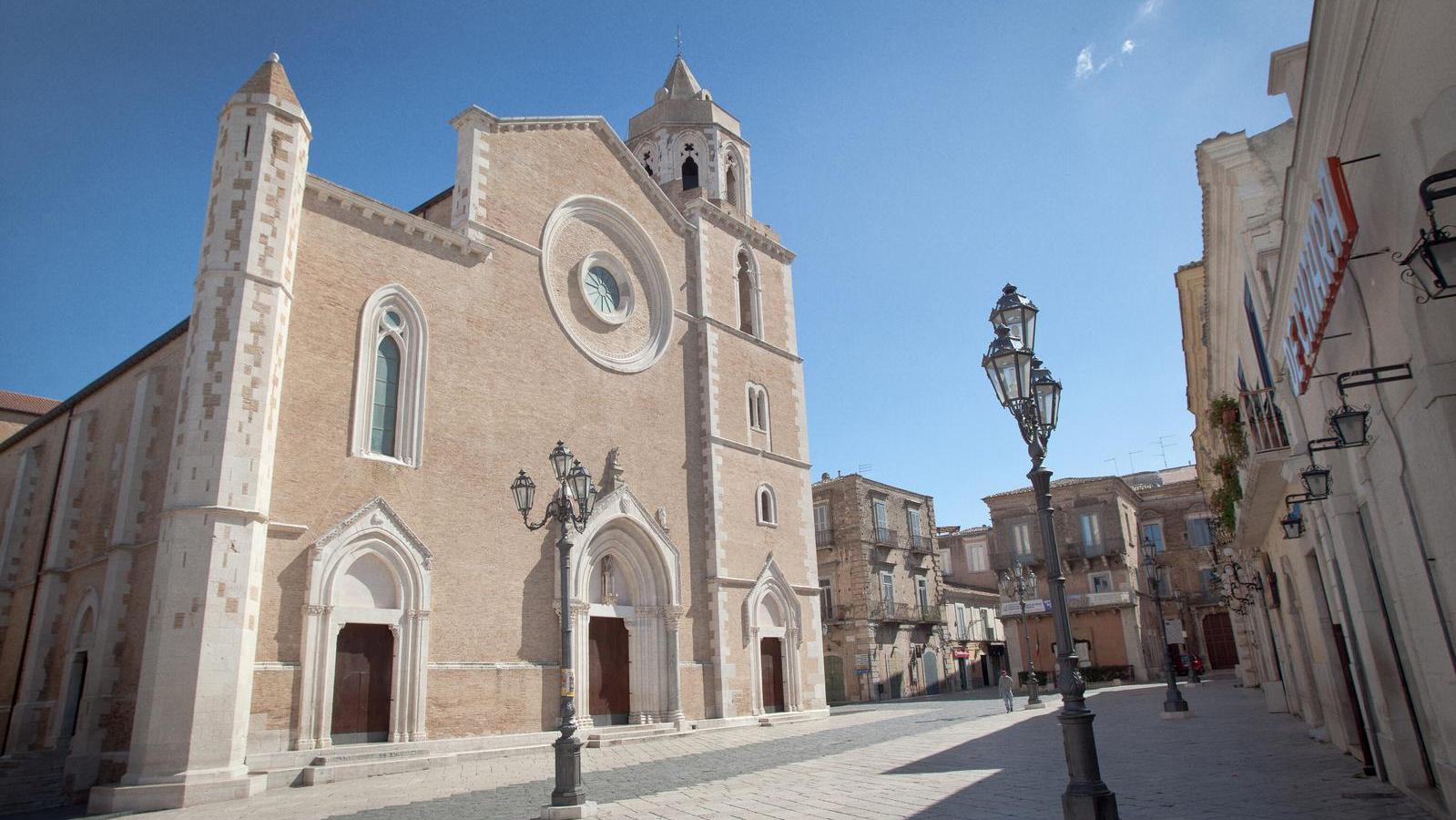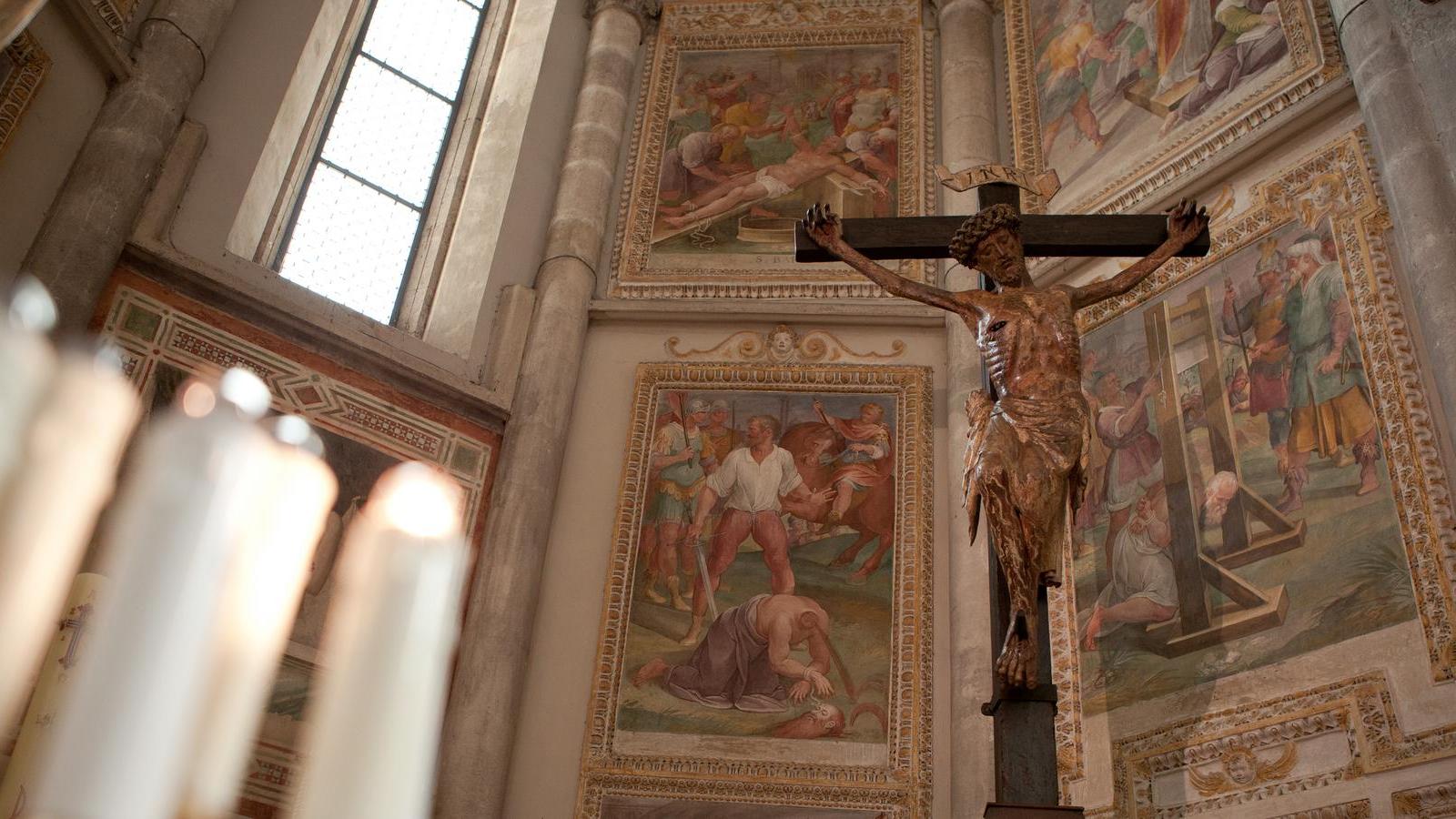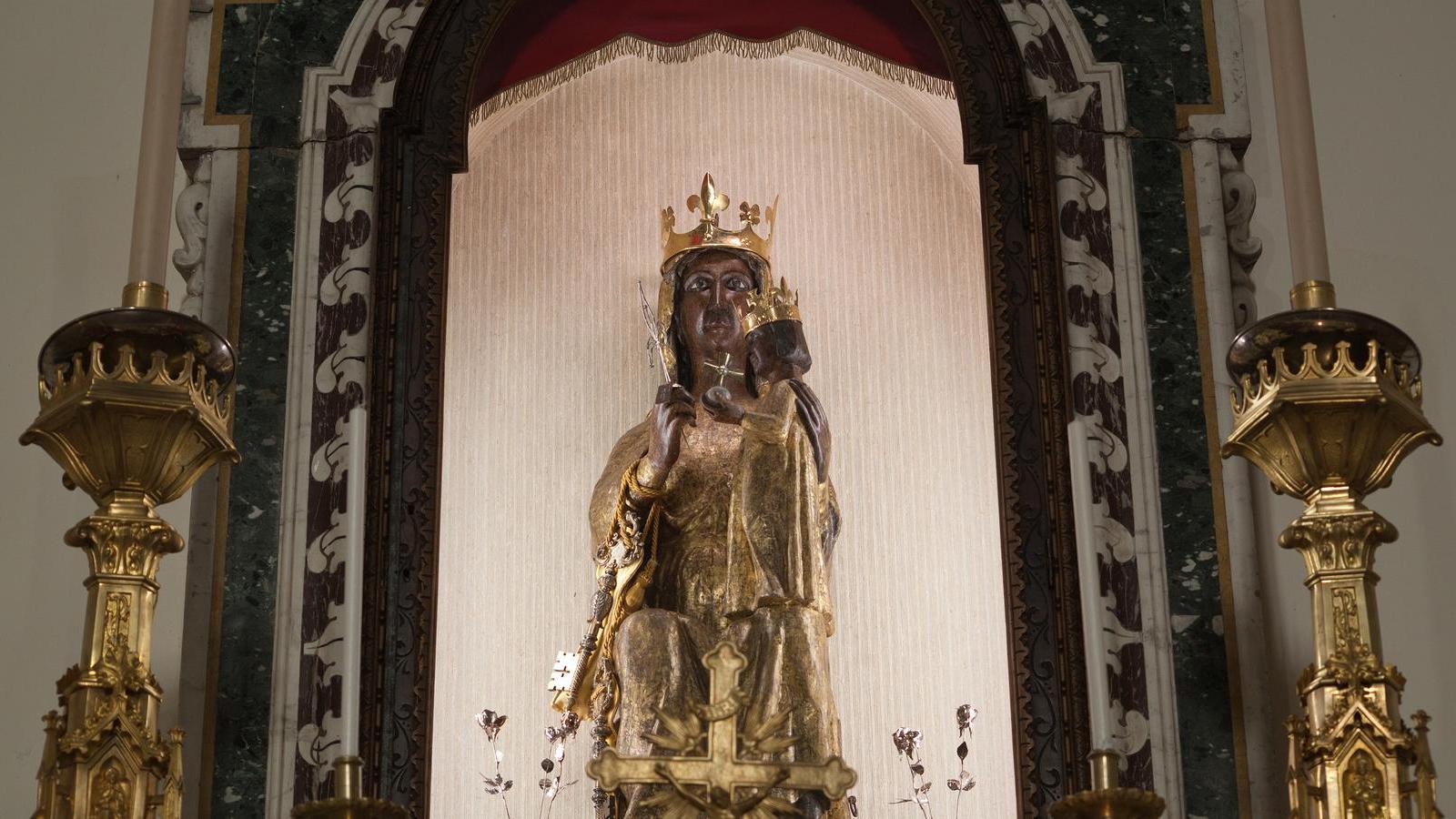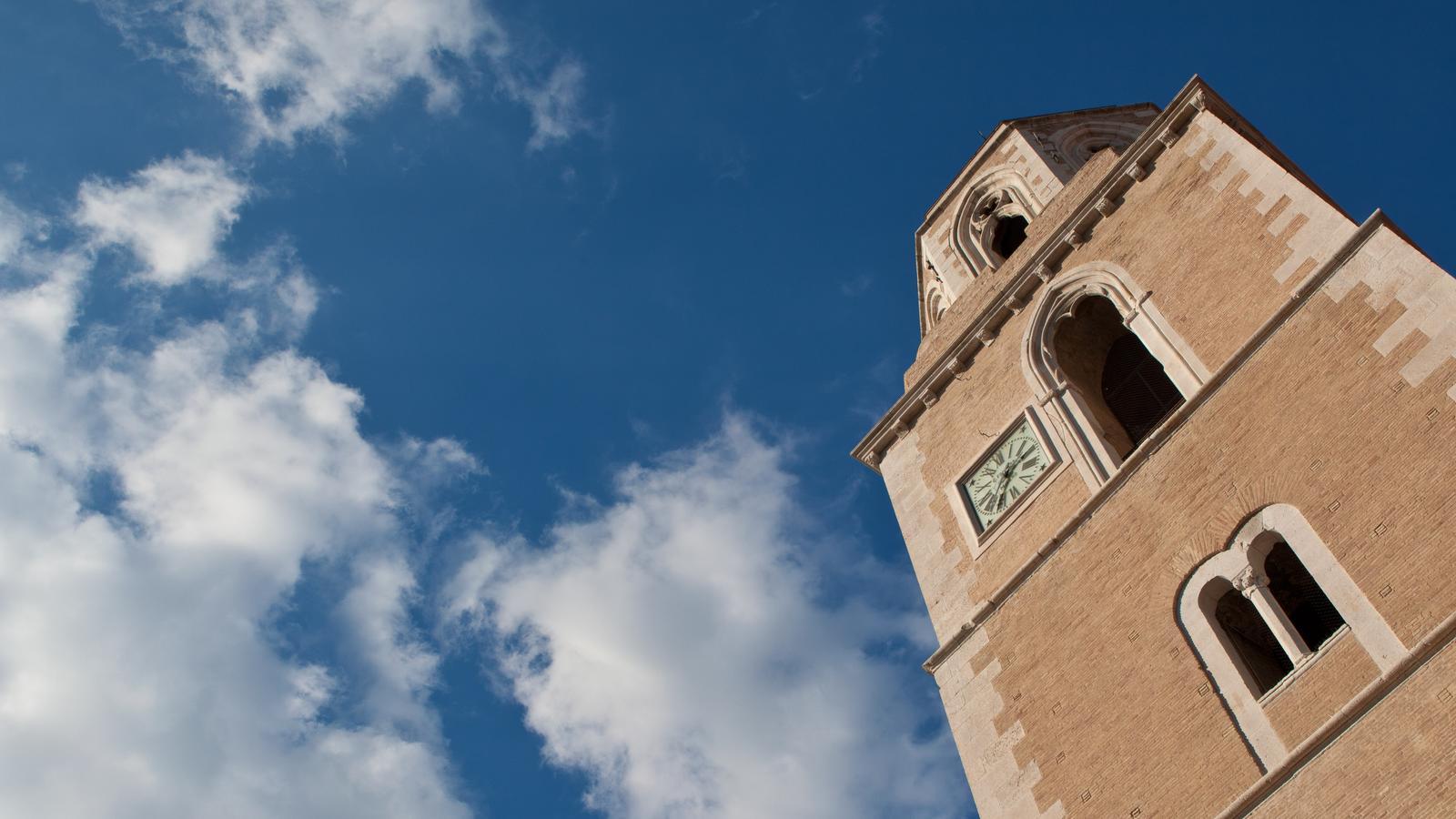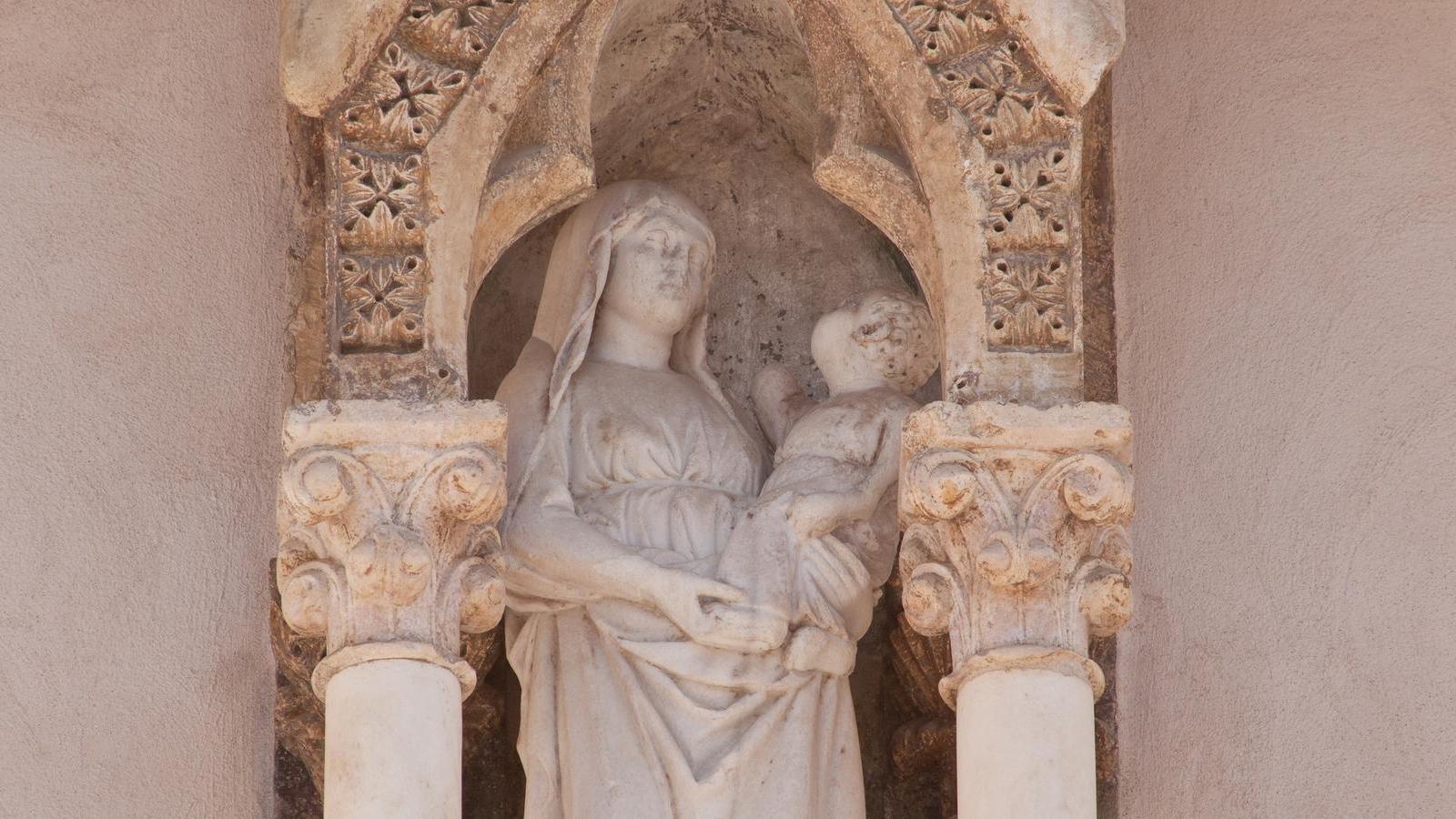Photo gallery
Information
When Charles II of Anjou in 1300 annihilated the Saracens of Lucera, the Christian faith in the Apulian city was restored: the Luceria saracenorum became Lucera civitas Sanctae Mariae. The new Cathedral was built in the Angevin Gothic style and designed by the French architect Pierre d'Angicourt, perhaps on the demolished mosque between 1302 and 1317.
The facade, in terracotta and white stone, is asymmetrical, yet harmonious. At the right aisle there is a powerful square bell tower, characterized by the opening on several levels of elegant Romanesque mullioned windows and Gothic openwork windows; at the top there is an octagonal lantern (16th century). On the left there is a more delicate octagonal tower.
The prospect has a rose window and 3 stone portals with canopy ogival: the central one, more elaborate, is framed within a shrine supported by columns and surmounted by the coat of arms of the Angevins; in the lunette of the portal is sculpted a Madonna and Child of the fourteenth century, Above the shrine is a statue of the Archangel Michael. The portal on the left is surmounted by a high single-hole, while the right one insists on the bell tower.
The interior of the basilica is a Latin cross, with three naves and three apses of Gothic style; the ceiling of the central nave is trussed, supported by powerful ogival arches grafted on columns of old green that according to tradition come from the destroyed mosque. The current appearance of the interior is due to the restoration of the Gothic matrix of the building carried out in the nineteenth century that deprived it of all the decorative additions of Renaissance and Baroque.
The Cathedral houses works of considerable historical and artistic value, such as the baptistery and a fourteenth-century ciborium, a beautiful pulpit obtained from a funeral monument sixteenth century, the cenotaph of Charles of Anjou, a wooden crucifix of Rhine matrix (fourteenth century), the Last Supper attributed to Jacopo Palma the Younger. The altar table is assembled with elements from the palazzo federiciano of Castel Fiorentino, and behind it the apses contain frescoes of the sixteenth and seventeenth century by Fabrizio Santafede, Belisario Corenzio, and Avanzino Nucci, depicting the History of the Life of Mary and Jesus and the Martyrdom of the Apostles and Protomartyrs. The transept on the left is dedicated to Saint Mary Patron of Lucera: in the niche above the altar is placed the venerated wooden statue of the Virgin , gift of Charles II of Anjou to the city.

